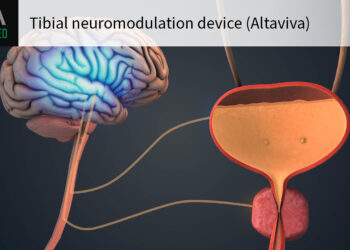Asthma is a respiratory condition that requires individualized care, considering each patient’s unique characteristics and therapeutic opportunities. Both primary care professionals and specialists are responsible for managing asthma in both adults and children. The new Manejo Integral del Asma (MIA 2.0) guidelines, based on the best international recommendations and adapted to the Mexican healthcare context, including costs and local realities, are aimed at healthcare professionals across various levels of care.
These guidelines highlight the importance of multidisciplinary management and continued efforts to improve asthma care in Mexico and Latin America.
The project was led by the Mexican College of Clinical Immunology and Allergy and endorsed by 16 scientific institutions or specialty societies, which manage asthma in fields such as allergy, pulmonology, otorhinolaryngology, emergency medicine, general and family medicine, internal medicine, and pediatrics. The general coordination was carried out by Désirée Larenas-Linnemann, MD, an international expert who represents Mexico for the Global Initiative for Asthma, coordinates the International Severe Asthma Registry, and leads the Center of Excellence in Asthma and Allergy at Médica Sur Hospital in Mexico City, Mexico.
In an interview with Univadis Spain, a Medscape Network platform, Larenas-Linnemann emphasized, “It is important to understand that asthma is an inflammatory process of the bronchial tubes.” This means that prescribing only salbutamol is insufficient, as both maintenance and rescue therapy require dual therapy: one drug to open the bronchi and another to reduce inflammation.
Another critical point concerns allergic asthma, which constitutes the majority of cases in both children and adults. In these cases, Larenas-Linnemann recommends co-management with an allergy specialist to apply immunotherapy alongside the specific treatment once symptoms are controlled.
Primary Care Challenges in Mexico
Larenas-Linnemann noted that many patients who are well treated during an asthma crisis in emergency departments often leave without essential maintenance treatment to prevent future flare-ups. “Follow-up care is very important,” she emphasized.
Abril Daniella Alemán Ortega, DO, pediatrician at the Hospital Regional de Alta Especialidad de Zumpango, Mexico, who did not participate in drafting the guidelines, mentioned that diagnosing and managing asthma is more challenging in children than in adults. However, early management is crucial to prevent these children from developing severe respiratory issues as adults. When asked about common mistakes made by her colleagues, Alemán pointed out the misuse of pharmacologic treatment, often involving incomplete regimens or short-term use. She also noted areas for improvement in medication administration and in providing information to families.
Alemán emphasized the importance of the guidelines because they encompass everyone from primary care physicians to subspecialists involved in pediatric care. She also stressed that the primary care doctor must recognize that a patient with recurrent respiratory symptoms likely doesn’t have recurrent infections, and that prescribing repeated antibiotics rarely solves the problem. “This is a good point to review,” she concluded.
The guidelines also provide specific recommendations for diagnosing and treating asthma under less-than-ideal conditions. For example, in settings where only beclomethasone and salbutamol are available, specific strategies have been outlined for appropriate use.
10 Recommendations Based on MIA 2.0 Guidelines
When to suspect asthma. Suspecting asthma can be challenging due to the varied ways it can present, often without the classic wheezing. However, recognizing key symptoms and understanding their variations make raising suspicion straightforward. The four key signs/symptoms that suggest asthma are cough, dyspnea (shortness of breath), wheezing, and chest tightness.
If two or more of these symptoms are present, particularly with variation in time, intensity, and exacerbation with environmental factors (such as exercise, laughing or crying, temperature or humidity changes, or allergen exposure), asthma should be suspected. The likelihood of asthma increases if these symptoms are frequent or worsen at night or in the early morning.
What doesn’t help in diagnosis. Chest x-rays are generally not useful for diagnosing asthma because they typically do not show changes outside of an acute asthma crisis. They are only useful for excluding alternative diagnoses. In patients with well-controlled asthma who are symptom free, spirometry results are usually normal. While spirometry with classic abnormalities confirms asthma, a normal result does not rule it out.
What helps. Clinical manifestations should be combined with respiratory function tests that demonstrate airflow obstruction, particularly during exhalation and its variability. Useful tests include spirometry before and after administering a bronchodilator, peak flow measurement over 5-15 days, oscillometry before and after bronchodilator administration, and, in rare cases, bronchial challenge tests.
When possible, especially if pulmonary function tests are inconclusive, testing for positive type 2 inflammation biomarkers is recommended because most asthma cases involve type 2 inflammation. In children younger than 5 years, pulmonary function tests are limited, and symptoms are often linked to other age-specific conditions. However, between ages 2 and 3, a subgroup of children who will have poor long-term outcomes can be identified, and by age 5, these children typically show significant reductions in lung function. A specific tool, the Asthma Predictive Index, can help predict which preschool children with wheezing will likely develop asthma. If symptoms are highly suspicious, a therapeutic trial should be performed to assess response.
After confirming the diagnosis, categorize the disease. Define the level of asthma control. The Asthma Control Test includes five simple questions about symptoms and medication use over the past 4 weeks, allowing patients to evaluate their own control. Versions are available for both adults and children.
Individualize treatment by assessing future risk, severity, phenotype, and endotype. For example, in suspected allergic asthma, skin or serum tests with allergens should be conducted to confirm sensitization.
What if a full assessment isn’t possible? A positive clinical response to a therapeutic trial is a strong indication of asthma. This means symptom improvement with low-dose inhaled corticosteroids and a rapid-acting bronchodilator, administered as needed, for at least 4-6 weeks, with symptoms worsening upon discontinuation.
Avoid prescribing diets without justification. Patients with asthma and documented food allergies are at a higher risk for complications. If food allergies are suspected, a diet free of the specific allergen should only be prescribed after confirming the allergy through the presence of specific immunoglobulin E levels. Unnecessary dietary restrictions should be avoided because they can lead to nutritional imbalances.
Define medications and devices. In addition to selecting the appropriate medication — such as bronchodilators, anti-inflammatories, and biologics — it is crucial to choose the right device for drug administration based on the patient’s preferences and capabilities.
It is important to note that synergistic therapy differs from combination therapy. Synergistic therapy refers to the combination of two drugs in one device, such as inhaled corticosteroids with long-acting beta-2 agonists, which theoretically offers greater efficacy than using the two separately. An example is the maintenance and reliever therapy approach, where a dual inhaler is used for both maintenance and rescue, reducing the frequency of crises. However, salbutamol-ipratropium bromide is not considered synergistic because both are bronchodilators without an anti-inflammatory component.
MIA 2.0 includes a treatment algorithm for each age group, integrating maintenance-rescue management blocks, with preferred and alternative options for each of the five treatment steps.
Educate the patient: Action plan and rescue treatment. Every asthma patient should have a written action plan outlining what to do when symptoms worsen and the risk for exacerbation arises. A key aspect of rescue treatment is that patients must always have access to an anti-inflammatory (such as a corticosteroid or, potentially, a leukotriene antagonist) and should never rely solely on short-acting beta-2 agonists. Sole use of these can lead to more frequent asthma attacks and increased mortality. For rescue treatment, budesonide-formoterol, or beclomethasone-formoterol, or salbutamol with inhaled corticosteroids in two separate devices is recommended.
Managing a patient with severe exacerbation (crisis). Assess whether the patient is experiencing a life-threatening crisis with imminent respiratory failure or has risk factors for fatal asthma. If so, initiate high-dose inhaled bronchodilators, oxygen therapy, and systemic corticosteroids immediately, and transfer the patient to a facility capable of managing a potentially fatal asthma crisis.
If a life-threatening crisis or risk factors are ruled out, evaluate the severity of the attack and determine treatment for the first 60 minutes, with reassessment at 1 hour. For patients with oxygen saturation below 94% (at sea level), administer oxygen therapy and inhaled medications via nebulization with pressurized oxygen. If the response is not favorable within an hour, and no more than 3 hours, hospitalize the patient.
During an asthma crisis, pulse oximetry and pulmonary function test values are more reliable than symptoms alone. However, these objective measures should always be incorporated into the overall clinical picture.
When to refer to a specialist.
- Children and adults with recurrent respiratory symptoms but a low likelihood of asthma.
- Difficulty confirming an asthma diagnosis even after a therapeutic trial with inhaled or oral corticosteroids.
- Patients with asthma and chronic obstructive pulmonary disease, particularly if treatment priorities are unclear, or if they show signs of chronic infection, hemodynamic or cardiovascular issues, or other pulmonary diseases.
- Persistently uncontrolled or severe asthma with frequent exacerbations — two or more crises per year despite proper inhaler use — requiring step 4 treatment, high-dose inhaled corticosteroids, or long-term use of oral corticosteroids (corticosteroid-dependent asthma).
- Risk for fatal asthma, including crises triggered by nonsteroidal anti-inflammatory drugs, aeroallergens, food allergens, or anaphylaxis. Patients with severe asthma should be treated in specialized centers with expertise in managing complex cases.
- Evidence or risk for serious side effects from treatment or symptoms suggesting complications. If moderate-dose maintenance and reliever therapy does not control asthma and the dose of corticosteroid inhalers is increased, refer to a specialist if levels of exhaled nitric oxide or eosinophils are elevated.
- At-risk groups, including pregnant patients, those suspected of having occupational asthma, patients who frequently utilize healthcare insurance, or those with excessive anxiety from the patient or caregiver.
- In children aged 5 years or younger, if there is no clear association between symptoms and typical triggers or if there is a lack of response to treatment, delayed growth and development, early onset of symptoms, vomiting associated with respiratory symptoms outside of an asthma crisis, continuous wheezing, hypoxemia unrelated to viral illness, focal pulmonary or cardiovascular signs, clubbing of fingers, a history of hospitalization, or multiple emergency department visits for wheezing within a 12-month period.
The MIA 2.0 guidelines were endorsed by the Mexican College of Pediatric Pulmonology, Latin American Society of Respiratory Physiology, National Pulmonology Council, Mexican College of Clinical Immunology and Allergy, and several other medical societies.
The authors of MIA 2.0 declared no relevant financial conflicts. AstraZeneca Mexico, GlaxoSmithKline Mexico, and Sanofi Mexico provided financial support to the project, but their funding did not influence the content. Larenas-Linnemann disclosed receiving fees from various pharmaceutical companies and grants from multiple institutions. Alemán had no relevant financial conflicts.
This story was translated from Medscape’s Spanish edition.
Source link : https://www.medscape.com/viewarticle/asthma-care-must-know-insights-primary-practice-2025a1000jzd?src=rss
Author :
Publish date : 2025-07-29 12:57:00
Copyright for syndicated content belongs to the linked Source.












